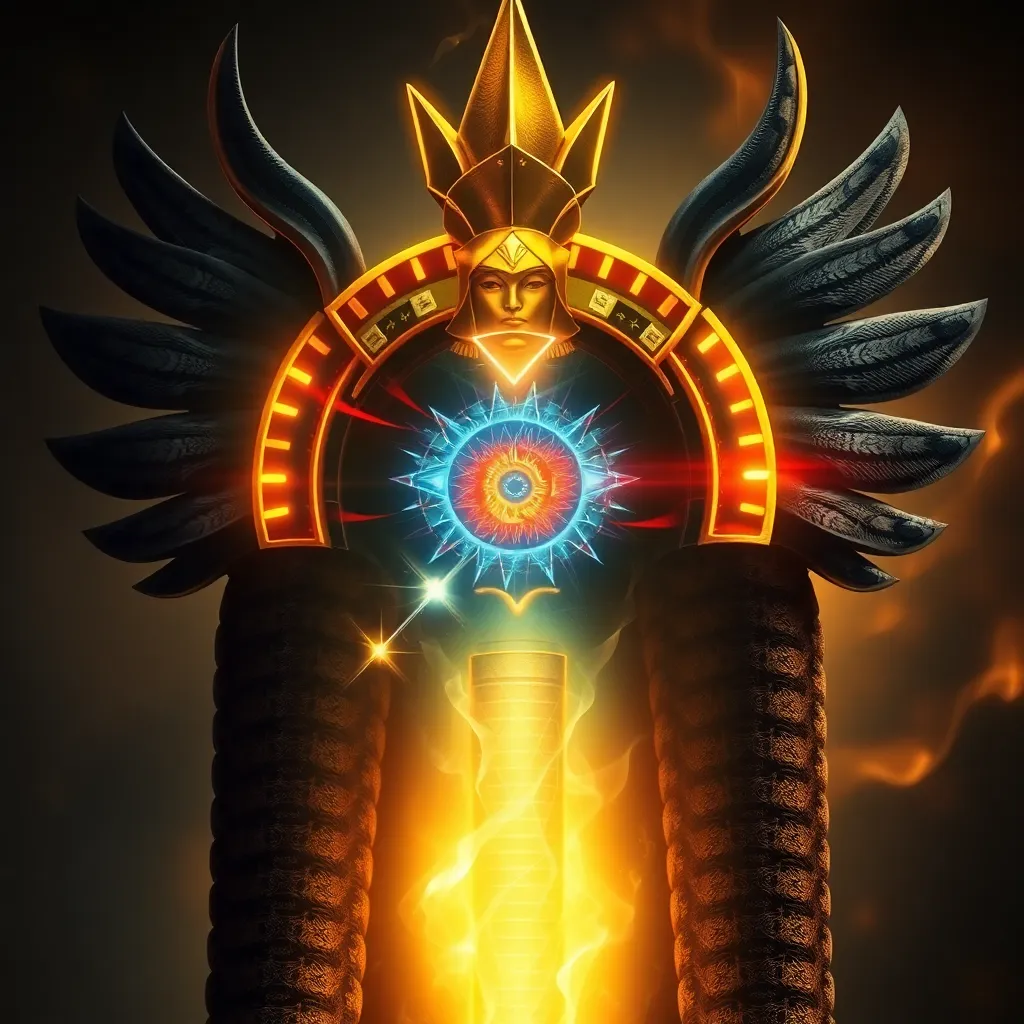The Eye of Ra: The Power and Wrath of the Goddess Sekhmet
I. Introduction
The Eye of Ra is a powerful symbol in ancient Egyptian mythology, representing both protection and vengeance. This emblematic eye is closely associated with the goddess Sekhmet, a fierce deity known for her dual nature as a protector and a destroyer. In this article, we will explore the significance of the Eye of Ra and delve into the complexities of Sekhmet’s character, shedding light on her role in the ancient world and her lasting impact on mythology and culture.
II. The Mythological Roots of Sekhmet
Originating in the rich tapestry of Egyptian mythology, Sekhmet is often depicted as a lioness or a woman with a lioness head. She is the daughter of Ra, the sun god, and embodies the concept of divine wrath. Her association with the sun symbolizes her fiery nature and her role as a force of destruction.
- Origins: Sekhmet’s origins are deeply intertwined with the myths surrounding Ra, the sun god.
- Divine Wrath: Sekhmet represents the fierce and often destructive aspects of the divine, as she is called upon to enact vengeance.
- Lioness Symbolism: The lioness symbolizes strength, ferocity, and the fierce protection of the pharaoh and the land.
III. The Eye of Ra: Symbolism and Meaning
The Eye of Ra is one of the most important symbols in ancient Egyptian culture. It represents not only the sun’s life-giving power but also its capacity for destruction and vengeance.
- Definition: The Eye of Ra is often depicted as a powerful, watchful eye that oversees and protects.
- Protection and Vengeance: It serves as a guardian of the pharaoh and the land, striking down those who threaten them.
- Connection to the Sun: The Eye is intrinsically linked to the sun, emphasizing the dual nature of light as both a giver of life and a force of destruction.
IV. Sekhmet’s Role in Ancient Egyptian Society
Sekhmet was not only revered as a goddess of war but also as a protector and healer. Her presence was felt in various aspects of ancient Egyptian life.
- Art and Architecture: Sekhmet was commonly depicted in temples and artworks, showcasing her fierce nature and protective qualities.
- Worship Practices: Temples dedicated to Sekhmet were significant centers for healing and rituals, where her power was invoked for protection.
- Influence on Healing: Sekhmet’s duality extended to her role in medicine, where she was believed to protect against diseases and promote healing.
V. The Wrath of Sekhmet: Myths and Legends
Many myths illustrate Sekhmet’s destructive nature, showcasing her role as a necessary force for balance in the universe.
- Destructive Myths: One of the key myths involves Sekhmet’s rampage against humanity, which was only quelled by the clever use of beer to intoxicate her.
- The Beer of Sobek: This story emphasizes the idea that even a fierce goddess can be subdued, showcasing the dynamic interplay between strength and vulnerability.
- Balance: Sekhmet’s wrath is often interpreted as a necessary force, maintaining cosmic balance and ensuring justice.
VI. The Power of Sekhmet: Protector and Healer
While Sekhmet is widely known for her wrath, she also embodies the qualities of a protector and healer.
- Protector of the Pharaoh: Sekhmet was often invoked to safeguard the pharaoh and the nation from external threats.
- Healing Aspects: Her connection to medicine highlights her role in promoting health and well-being among the people.
- Destruction and Healing Balance: Sekhmet’s persona reflects the balance between destruction and healing, demonstrating that these forces are often interconnected.
VII. Modern Interpretations and Cultural Impact
In contemporary society, Sekhmet has gained relevance beyond ancient mythology, resonating with modern spiritual movements and feminism.
- Contemporary Spirituality: Sekhmet represents the fierce feminine energy and empowerment, inspiring many in their spiritual journeys.
- Popular Culture: Sekhmet’s image has appeared in various forms of media, from literature to films, reflecting her enduring legacy.
- Revival of Interest: The increasing interest in ancient Egyptian deities highlights the importance of these figures in understanding cultural history.
VIII. Conclusion
In summary, Sekhmet embodies the complexities of a goddess who represents both wrath and healing. The Eye of Ra serves as a powerful symbol of her dual nature and the broader themes of protection and vengeance in ancient Egyptian mythology. As we reflect on Sekhmet’s legacy, we are reminded of the balance between power and compassion, a theme that resonates in both mythology and today’s world.




